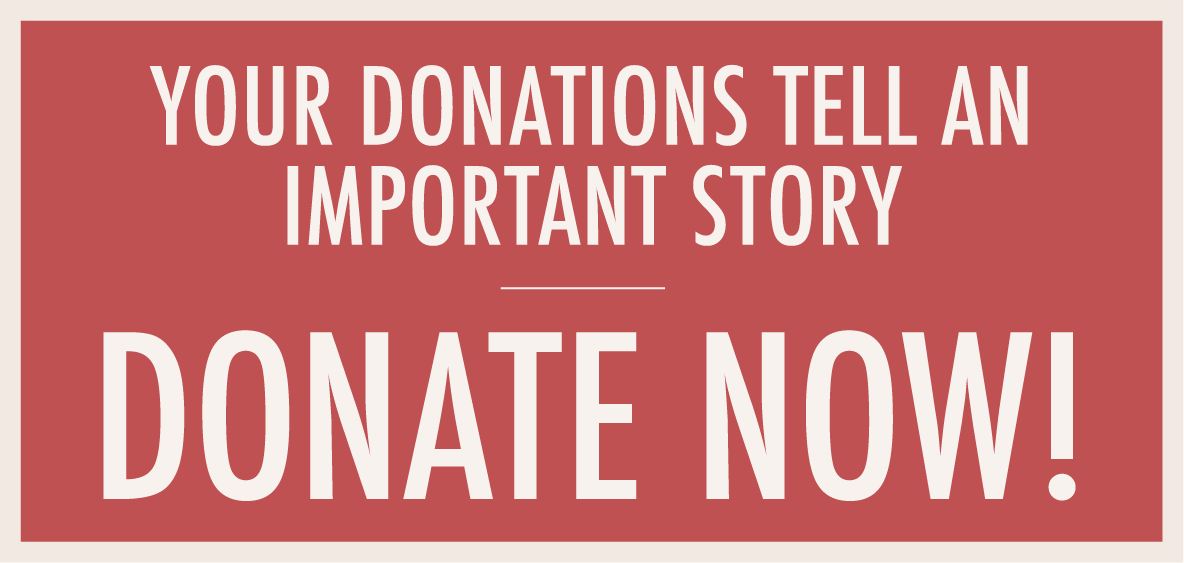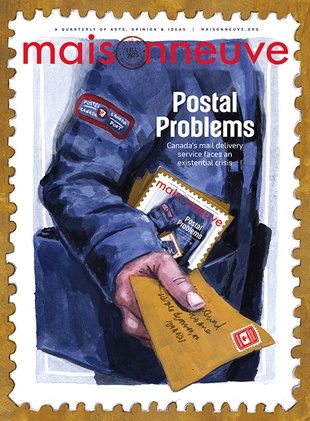 Image by Nancy Pavan, background courtesy of Envato
Image by Nancy Pavan, background courtesy of Envato
Canadian Blend
A Second Cup in Ghana takes a subtle approach to channeling Canadiana.
The local coffee shop often becomes central to a place’s cultural identity. On the national level, Tim Hortons has long played this role, wearing the crown of the most Canadian coffee chain. While we may gripe about its quality, mock its strange new menu items and yearn for its glory days, Tim Hortons remains as synonymous with Canada as Starbucks is with Seattle, as iconic to us hosers as the coffee and donuts chain Dunkin’ is to Bostonians. Store layouts may change, but Tims retains a sense of timelessness: the shades of brown and red, the shelves of travel mugs and bagged coffee beans and the display case of donuts tempting customers as they wait in line can be found from coast to coast.
This spring, I took a trip to the United Kingdom with my partner. On our final day in Liverpool, after I’d gotten my fill of Beatles landmarks, we stopped at one of the city’s two Tims locations. Entering that British Tim Hortons felt like walking into the Canada Pavilion at Walt Disney World’s Epcot. Figures wearing toques and red plaid sweaters and skirts marked washroom signs. Maple leaves adorned the menu, food packaging and “thank you” screens on self-service kiosks. If you weren’t previously aware of Tims’ country of origin, you were sure to know it within a few minutes of stepping inside.
In that Tim Hortons, I saw Canada as non-Canadians were invited to see it: a perpetual winter wonderland filled with moose and “aboot”-saying hockey players. It was a Canada boiled down to its most marketable and superficial elements. It felt a bit disrespectful to see my culture portrayed like that. Sure, I love beavers and maple syrup as much as the next Canadian, but this didn’t feel like a fair image of the country I'd grown up in, a diverse society with distinct seasons and many people—myself included—who are turned off by hockey.
Still, that portrayal of Canada is profitable, and it’s not hard to see why. Canadians have long enjoyed a global reputation as the more polite, “less problematic” Americans, and emphasizing Canadianness might be a way to endear one’s brand to customers. I would argue that cultural diversity, a focus on peace and an electoral system slightly more balanced than the US’s are more reflective of the real Canada, but you can’t hang those elements on a coffee shop wall. The most obvious way to communicate Canadianness is by relying on the iconography of the Great White North.
There are over 2,300 Tim Hortons locations abroad, in countries such as the United States, Spain and China. In Africa, though, another Canadian cafe has established a stronger presence. Surprisingly, it’s Second Cup: a specialty coffee chain that made a name for itself by selling coffee in Canadian shopping malls and office towers. Rather than plastering kitschy images of a snowy dreamland across its stores, Second Cup takes a more subtle approach. Many of its international locations dangle the dream of Canadian life before customers, letting them access an image of a luxurious and comfortable life overseas through a quick coffee run.
About a month after my trip to the UK, I travelled to Ghana for a ten-week journalism internship to report on climate solutions in the local agricultural sector. When I first passed by Atlantic Mall in Accra, Ghana’s capital city, I did a double-take. The shiny new mall, located near the junction of two busy thoroughfares, seemed almost out of place among the market booths and motorcycles weaving between stalled cars. But what really caught me off guard was how on the front of the massive grey building there was a familiar name: Second Cup.
I found it strange that there, thousands of kilometres away from home, stood a cafe of the same chain I’d seen in a University of Ottawa residence building. I passed by that coffee shop every time I visited my girlfriend, back when she lived on campus a few years prior. It wasn’t my favourite spot: there were too few tables, and in the winter, you’d get hit by a blast of cold air whenever the front door opened, no matter where you sat. That image became what I expected of Second Cup—it’s never quite disappointing, but it’s nothing to write home about.
Regardless, I was excited to see a piece of home. I was also yearning for a decent cup of joe; I’d had trouble finding anything better than Nescafé in the weeks I’d spent in Accra. So, one evening, I called a ride to take me to Atlantic Mall.
While I’d imagined the mall’s Second Cup as a prestigious Canadian enclave built as a monument to the country, I realized almost immediately how wrong I’d been. Waist-high barricades separated the Second Cup from Palace, the Walmart-esque superstore in which the cafe occupied a corner. The location was more comparable to a food court Starbucks or a Walmart McDonald’s.
In this location, the company’s Canadian identity was decidedly muted. While the Canadian Second Cup logo features a minimalist drawing of a coffee cup alongside the company’s name, the international version introduces a wisp of steam and a little red maple leaf rising from the cup. Aside from this, the only signifiers of my heritage in the cafe were a few maple leaf-adorned mugs and a maple latte on the menu.
When I walked up to order a coffee, I inquired about the chain’s origins. “It’s a Canadian company?” I asked the barista, half a question, half a statement that I already knew the answer to.
“Ah? Yes,” he replied.
“I’m Canadian.”
“Oh.” He sounded about as interested as if I’d just told him the plastic-wrapped baguette sandwiches in the glass display case were seven minutes past expiry. It seemed the monotony of service jobs didn’t change much from Canada to Ghana.
Despite my disappointment, it was clear that the welcoming, open-concept design and fancy drinks of this Second Cup represented an aspirational lifestyle. The location offered a laid-back setting with padded chairs and nooks to work and people-watch from. The sleek interior stood in stark contrast to the rest of Accra that I saw—a busy, hot city marked by the din of engines, car horns and crowing roosters. This Second Cup was a quiet, cool place that was a microcosm of Western life: slow-moving and comfortably boring. It might not have been as interesting as the city outside, but it served as a retreat from the hustle and bustle of metropolitan life.
While the Tims I visited in Liverpool seemed intent on selling a fantastical version of Canada, the Second Cup in Atlantic Mall took a more restrained approach. There, it wasn’t the Canadian aesthetic that was for sale; it was the idealized and simplified picture of the Canadian lifestyle. Though it occupied a humble corner of a shopping mall, the store managed to make life in a country thousands of kilometres away feel within reach.
You’d likely be hard-pressed to find many Canadians who would call Second Cup their favourite coffee chain. The brand barely feels Canadian, which makes its international popularity all the more puzzling. In one volume of Canadian cartoonist Bryan Lee O’Malley’s graphic novel series Scott Pilgrim, the titular character assumes that every Second Cup entrance is a portal into the exact same coffee shop. Pilgrim’s attitude feels relatable: not outright dislike or disgust, but general disinterest toward what is essentially an overpriced coffee chain without the cultural cachet of Starbucks or Tim Hortons. Abroad, however, the mundanity of Second Cup turns into curated appeal, reflecting a Canada that is luxurious and sought-after.
The Second Cup brand operates under two separate companies. Second Cup Café, owned by restaurant franchisor Foodtastic, operates roughly 180 Canadian locations, according to its website. The Second Cup Coffee Company Inc., headed by president and CEO Jim Ragas, is responsible for about 180 stores in twenty other countries.
According to Ragas, the first international Second Cup locations opened in the United Arab Emirates and Kuwait twenty-one years ago. They were each headed by locals who had lived near Second Cup locations while attending university in Montreal and Toronto respectively. When the students’ parents came to visit, the families would often spend time at those cafes, catching up over drinks. With both students having come from coffee-drinking cultures, Second Cup was a bridge between life in Canada and in their home countries. The two families owned hospitality brands in the Middle East, and the students saw it fit to bring Second Cup to the region. Second Cup’s presence eventually spread south into sub-Saharan Africa. According to the company’s website, most of the international locations are concentrated in that region and in and around the Middle East, with a few stores in the United Kingdom and France.
Ragas explains that the differences in local preferences are something the company is aware of. “We look at different markets with our regional franchise partners that we have in there and we try to adjust to what the market flavours are,” he says. Frappés are popular in Cyprus, while Lebanese coffee is served in Lebanon. This localization allows Second Cup to strike the golden balance between novelty and familiarity. International customers can still enjoy everyday flavours against the exciting backdrop of life in another country. Their sense of distance from Canada shrinks as they unwind in their cozy local Second Cup, even if it’s only for an hour or two.
The Canadian lifestyle is also presented through menu items. Ragas boasts of how Second Cup introduced frozen yogurt to Ghana. Now, fro-yo makes up a higher percentage of the Second Cup Coffee Company Inc.'s sales in Ghana than in any other region. Part of the appeal of the unfamiliar treat might be related to the foreign place from which frozen yogurt came. By buying American-invented fro-yo at Second Cup, Ghanaians get to feel that they’re experiencing a little piece of Western life.
In many cases, Second Cup markets items that may seem unremarkable in Canada as luxurious products overseas. Second Cup Ghana’s Instagram page proudly presents the brand as an “international coffee shop,” complete with well-lit photos of cakes, croissants and baguette sandwiches. Other posts promise a “moment of pure bliss” along with cups of coffee, or depict “the ultimate comfort” of a bagel with cream cheese. These delicacies are framed as little windows into another world, laid out and ready for purchase at your local cafe. As the Second Cup Coffee Company Inc. boasts on its website, each location is meant to be a “home away from home”—a place where customers can relax with the comforts of Western life.
The brief gateway to Canada that Second Cup offers Ghanaians is an attractive one. The reality is that many locals want to leave Ghana. According to a 2022 report from the Organisation for Economic Co-operation and Development (OECD), an international group with thirty-eight member countries, between 2009 and 2018, over forty percent of Ghanaians wanted to emigrate. Employment concerns were the main driver of people’s desires to leave the country. During my time in Ghana, the struggling economy was a recurring conversation topic: inflation has become a major issue in the country, with a year-over-year inflation rate of 21.5 percent as of September, according to the Ghana Statistical Service.
The OECD report found that about a million Ghanaian emigrants were living abroad as of 2020. While roughly half of them lived in other African countries, the rest ended up in OECD countries, with the primary destinations being the US, the UK, Italy, Germany and Canada. The number of Ghanaian emigrants living in OECD nations tripled between 2000 and 2020. Canada has been a major destination for Ghanaians who have settled overseas.
But the financial difficulties that have compelled some Ghanaians to leave the country might also present a barrier to enjoying the Canadian lifestyle within Ghana. At Second Cup’s Atlantic Mall location, an Americano costs around fifty Ghanaian cedis (roughly $4.50 CAD). In Accra, you can find a full lunch at a fast food restaurant for around eighty cedis. Much like the cost of emigrating to Canada, Second Cup’s offerings are unaffordable to many Ghanaians. While Ragas is aware of this point, he says what matters to many blue-collar customers is the brand's reputation. “These days, people want to take a picture showing they’re sitting in Second Cup and post it on Instagram, post it on Facebook,” Ragas says. “In some cases, what they’re spending is way more than they should be spending proportionally for their income—but it’s a question of self-esteem, a question of being able to say to people, ‘Hey, I can still afford to do this.’”
The marketing of Second Cup in Ghana is subtly contradictory. The company creates an inviting atmosphere, built on the image of a luxurious and welcoming Canada, but the store’s offerings are prohibitively expensive to many Ghanaians. Ironically, Second Cup captures the reality of Canada’s place on the world stage: dressed-up and friendly, but nonetheless inaccessible to many people.
Second Cup’s portrayal of the Canadian lifestyle stuck with me through my final months in Ghana. On the trip home, I thought about the country I was returning to: not the maple syrup-soaked Canada displayed by the Tim Hortons I visited in Liverpool, but the casually inviting Canada of Atlantic Mall’s Second Cup. The country may seem to greet everyone with open arms, but it’s in fact exclusive and unaffordable to many of those waiting outside. I’d always been proud of how welcoming my country was, but now I’d seen how many people can’t make it in.
And yet, my first act upon returning to Canada was one so predictable and cliché it sounds made-up. After stepping off my seventeen-hour flight from Addis Ababa, Ethiopia to Toronto, I wasted no time in beelining to the nearest Tim Hortons for a double-double. I know there are better cups of coffee out there, even within the Pearson airport. But after so long away, I didn’t want anything fancy—I wanted the Canada I knew. As I sat and sipped from my red paper cup, the tables around me populated by blue-collar workers in orange construction vests, families waiting to board their next flights and minimum-wage workers on their breaks, I knew I was home. ⁂
Jonah Grignon is an Ottawa-based agricultural reporter who recently completed a work term in Ghana with Farm Radio International.





